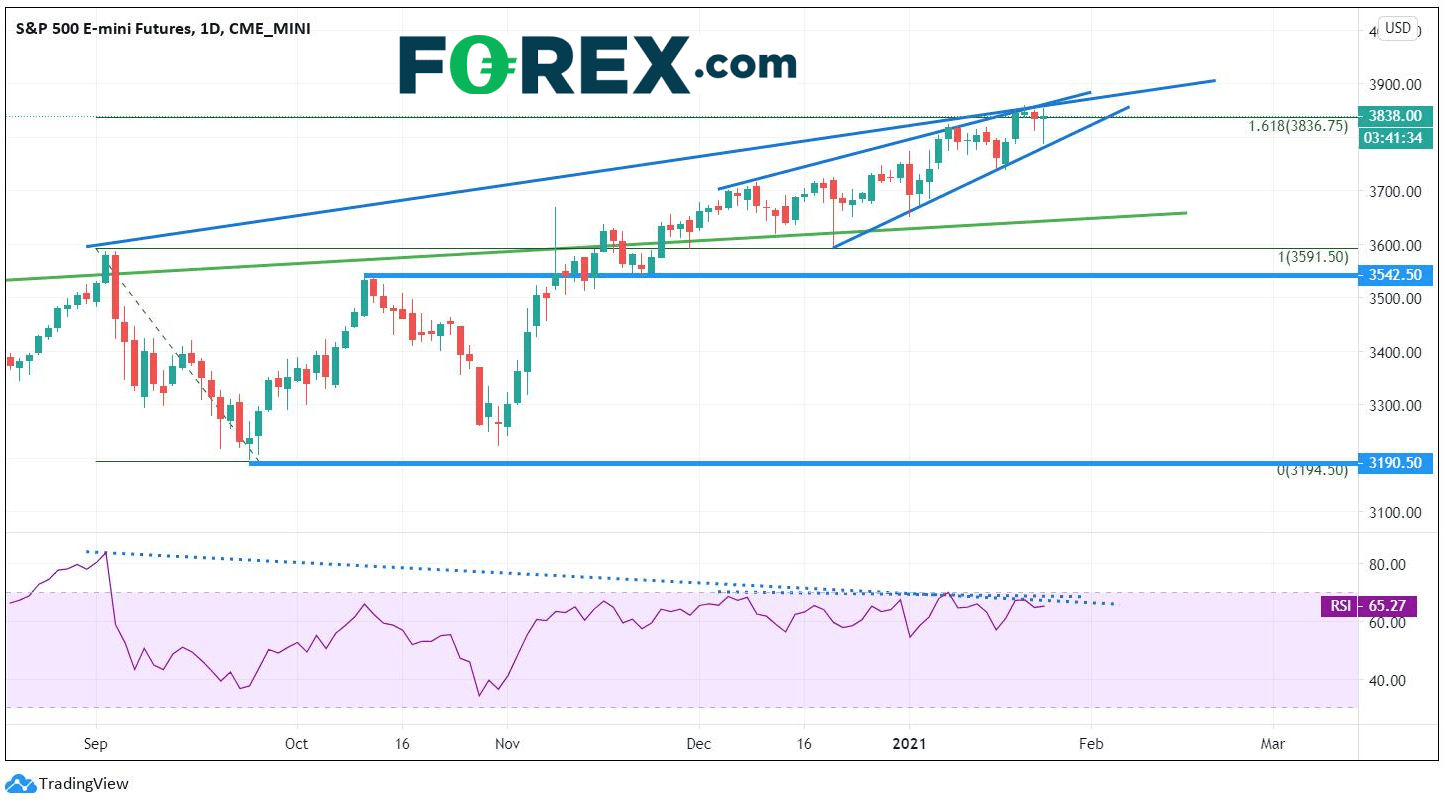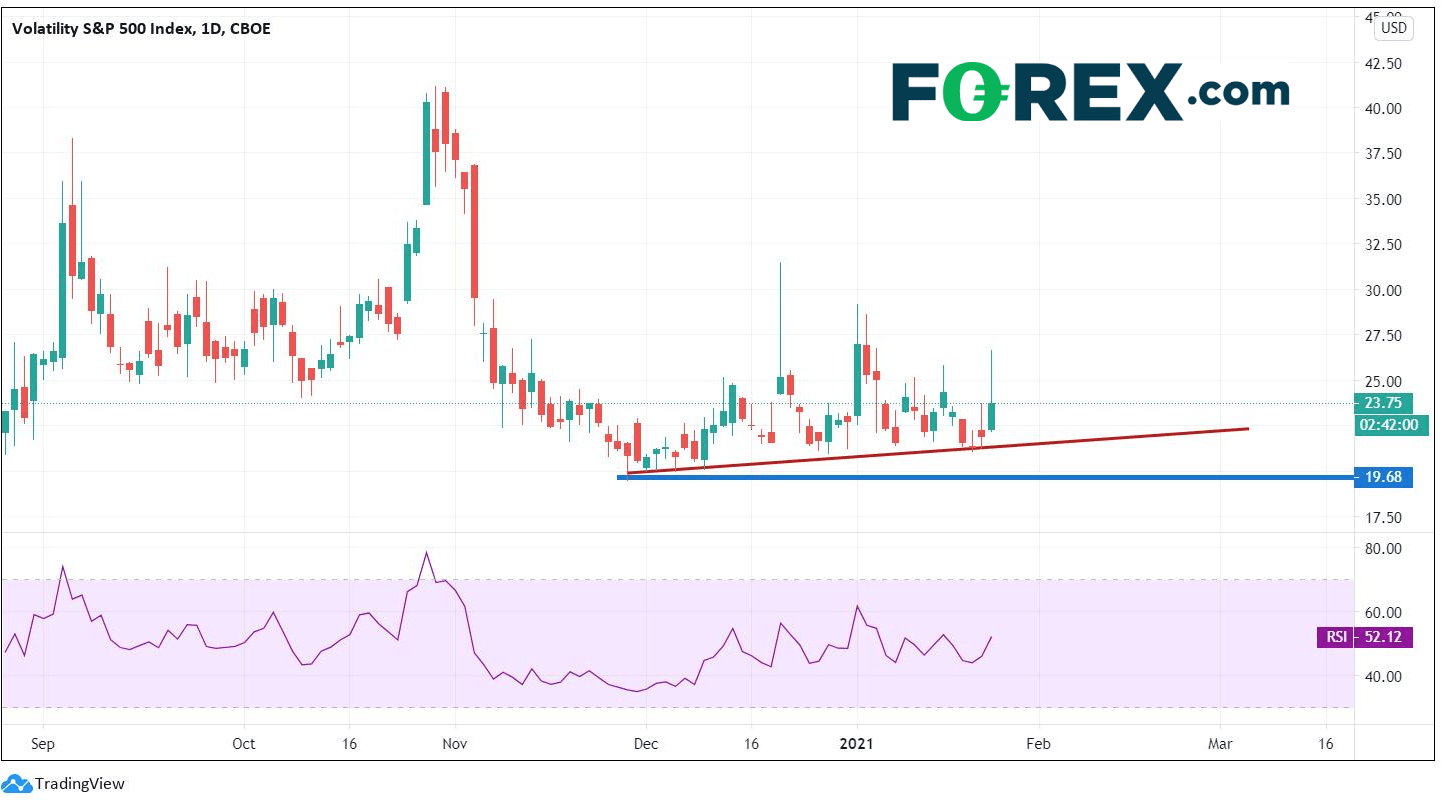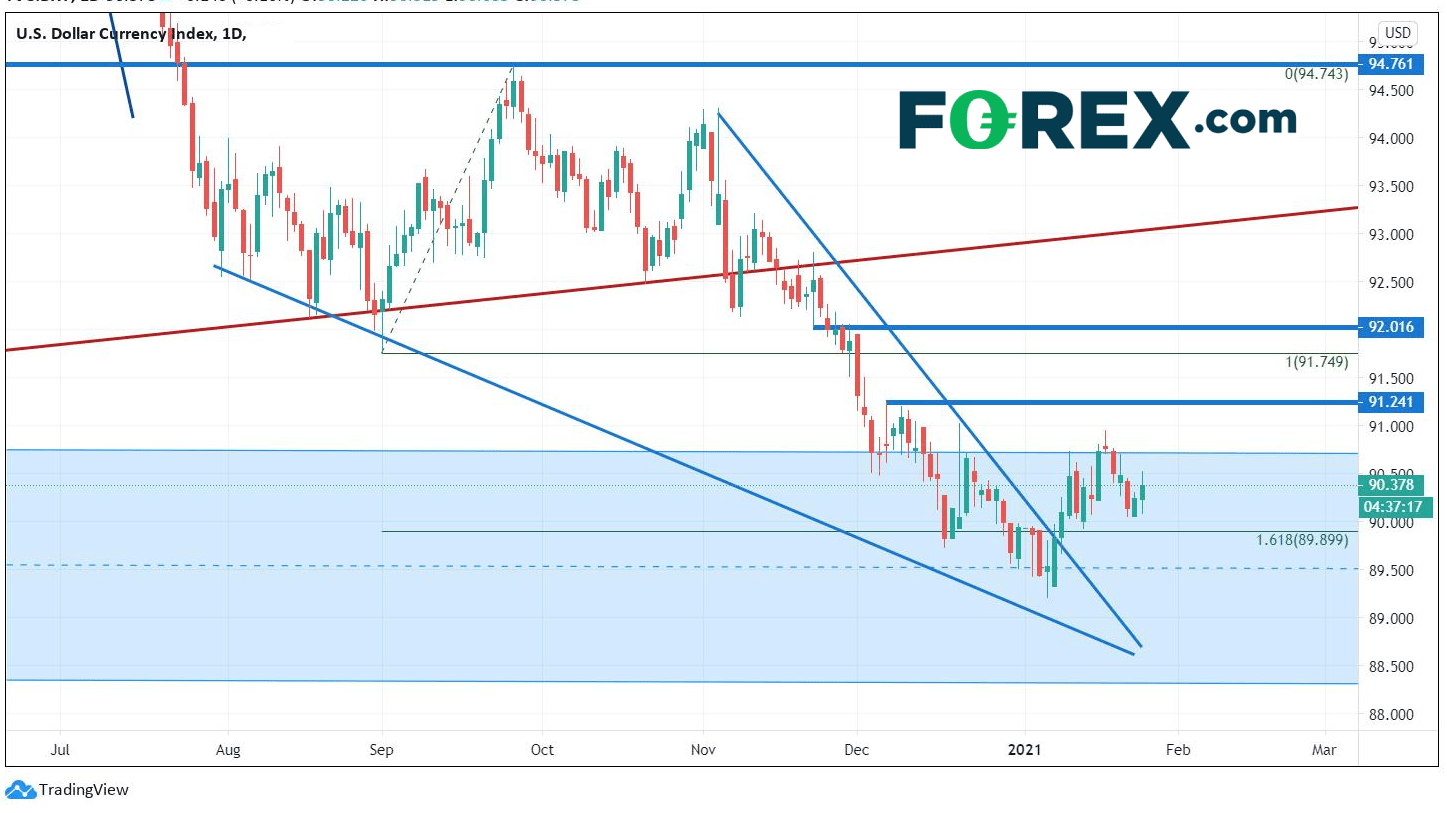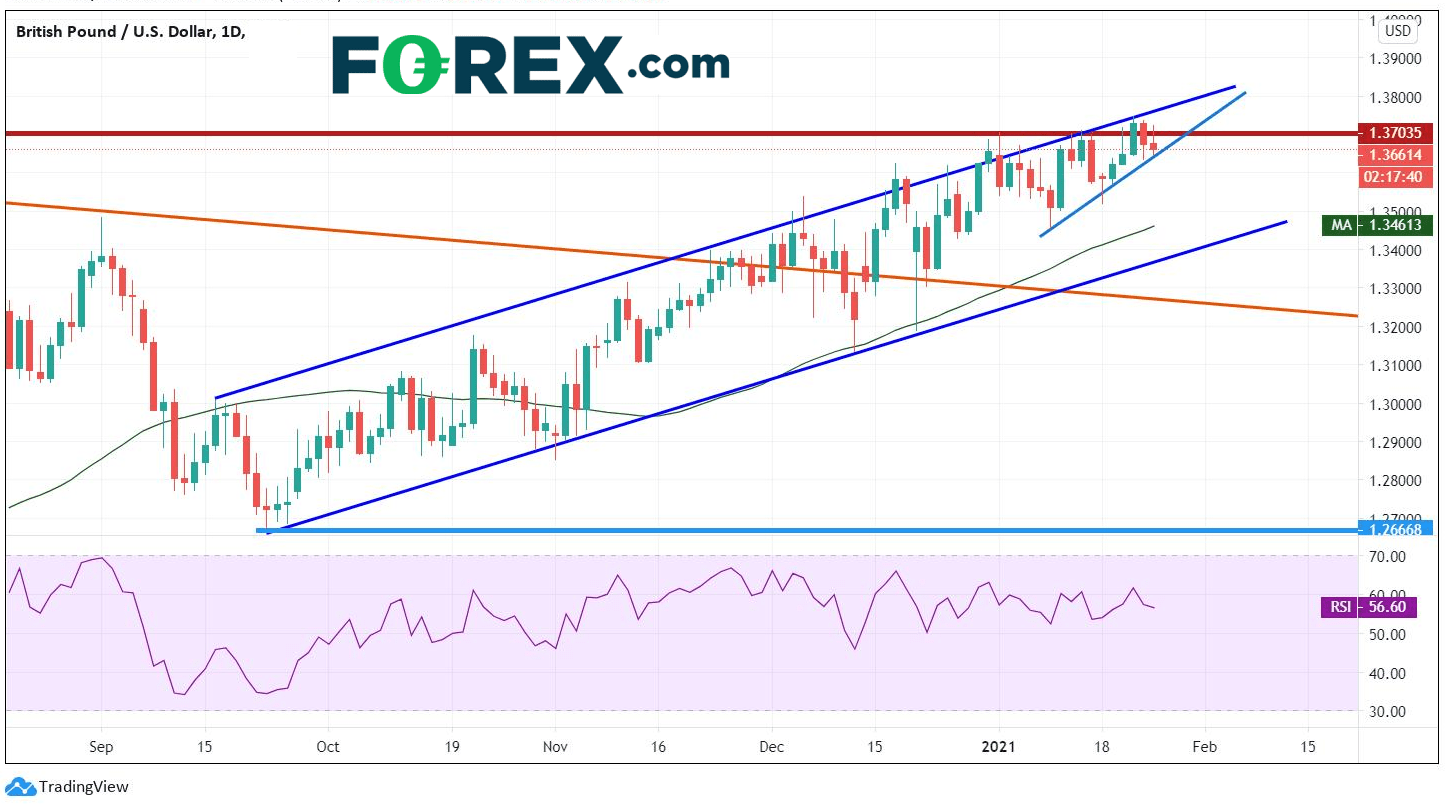
On a daily timeframe, the S&P 500 has moved to a level where it is decision time for traders. The index is currently at the 161.8% Fibonacci extension from the highs on September 2nd, 2020 to the lows on September 24th, 2020. In addition, price is pushing up against the trendline dating back to September 2nd. The stock index is also near the apex of an ascending triangle. The RSI is diverging with price. Some stocks, such as BBBY and GME, have gotten the snot squeezed out of them. Volatility was wild today, as the S&P 500 traded from 3853.25 down to 3788.50 in just under ½ hour, and by mid-afternoon, was back to positive.

Source: Tradingview, CME, FOREX.com
The Volatility S&P 500 Index (VIX) may be warning us of something. As the S&P 500 continued to put in higher highs, in December 2020, the VIX began putting in a series of higher lows! This indicates that traders are buying insurance against stocks in case of a risk-off move.

Source: Tradingview, CBOE, FOREX.com
Does this indicate there is more volatility or even a pullback in stocks ahead? And if so, what does that mean for the US Dollar?
What could cause a pullback in stocks this week?
- A more hawkish Powell
- A higher core PCE (the Fed watches this to gauge inflation)
- Fears of a lower economic stimulus package than the $1.9 trillion Biden proposed
- Fears of “looking ahead” to tapering
- Problems with vaccine rollout
Anything can be a catalyst. As traders, we must determine what to do when, and if, stocks move lower. If stocks move lower for one of the above reasons, it will likely mean a US Dollar move higher.
DXY
The US Dollar Index (DXY) has not done much over the past month. The index moved lower into a support zone (blue) and has been trading in that zone since. The DXY has been oscillating around the 161.8% Fibonacci retracement level of the lows of September 1st to the highs on September 25th. However, by moving sideways, it did manage to move out of a descending wedge. If stocks move lower, DXY should move higher, above recent highs at 90.95. A complete retracement of the wedge is at 94.30, but that is a way off. Near term horizontal resistance before this is at 91.24, 91.75 and 92.01.

Source: Tradingview, FOREX.com
For insight on EUR/USD, see the Currency pair of the week.
Another currency pair, GBP/USD, has been in a forming a possible reversal formation of its own. The pair has been in an upward sloping chancel since mid-September 2020. On January 11th, GBP/USD began forming an ascending wedge. However, the GBP/USD failed to close above horizontal resistance at 1.3703 and the upper trendline of the channel. The pair is nearing the apex of the ascending wedge. A move higher in the US Dollar would cause GBP/USD to move lower, breaking below the upward sloping trendline of the wedge and towards the target at 1.3450. The 50 Day moving average corresponds with that level as well. Below there is the upward sloping bottom trendline for the channel near 1.3370.

Source: Tradingview, FOREX.com
Watch for more volatility in stocks this week ahead of FOMC on Wednesday. In addition, keep an eye on inflation data and news regarding the vaccine rollout. Any catalyst that causes stocks to move lower, should cause the DXY to move higher.
Learn more about forex trading opportunities.



